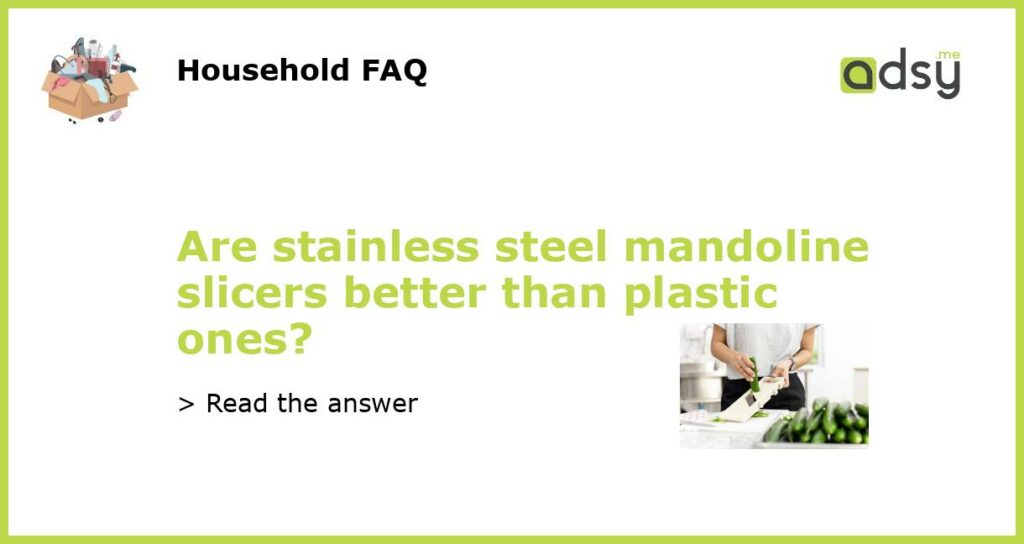Mandoline slicers have become increasingly popular over the years with many chefs and home cooks preferring them to other slicing tools. They are efficient, quick, and precise. However, with the growing concern over health and safety, many questions have been raised about the materials used in the construction of the slicers. The most common materials used to make mandoline slicers are plastic and stainless steel. In this article, we will delve into the debate about which is better and why.
Plastic Mandoline Slicers
Plastic mandoline slicers are widely available and affordable. They are also lightweight which makes them easy to handle. Most plastic slicers come with adjustable blades which allow for different cutting styles. However, one of the major drawbacks of plastic slicers is the potential for them to break or crack easily, especially with frequent use. They are also prone to dulling quickly, which means they need to be sharpened frequently. Also, plastic is not as durable as stainless steel and is not heat-resistant, which limits their use for hot foods.
Stainless Steel Mandoline Slicers
Stainless steel mandoline slicers are more expensive compared to their plastic counterparts. However, they are more durable and long-lasting. They are also corrosion-resistant, meaning they will not rust, and are heat-resistant, making them suitable for cutting hot foods. Another advantage of stainless steel mandoline slicers is that they maintain their sharpness for longer, which reduces the need for sharpening frequently. However, the downside of stainless steel mandoline slicers is that they are heavier and require more effort to handle than plastic slicers.
So, are stainless steel mandoline slicers better than plastic ones? The answer depends on your requirements and preferences. If you are looking for a lightweight, affordable option, then a plastic mandoline slicer may be suitable for you. However, if durability, sharpness, and heat-resistance are your top priorities, then a stainless steel mandoline slicer would be better. Ultimately, the choice between plastic and stainless steel mandoline slicers is a personal one based on individual preferences and budget.
Proper Usage and Safety
Regardless of the materials used, it is important to handle and use mandoline slicers with caution. Always ensure that the slicer is assembled correctly and that the blades are securely locked in place. Use a protective glove to prevent accidental cuts. Also, it is important to keep the blades sharp as dull blades can cause more accidents. Always store the slicer away from children and pets and follow the manufacturer’s instructions for use and maintenance.
Mandoline slicers are great kitchen tools that can help save time and effort when preparing meals. Whether you choose a plastic or stainless steel mandoline slicer, ensure that you use it safely and responsibly. Investing in a high-quality mandoline slicer is worth the money if you want precision and durability in your kitchen.






